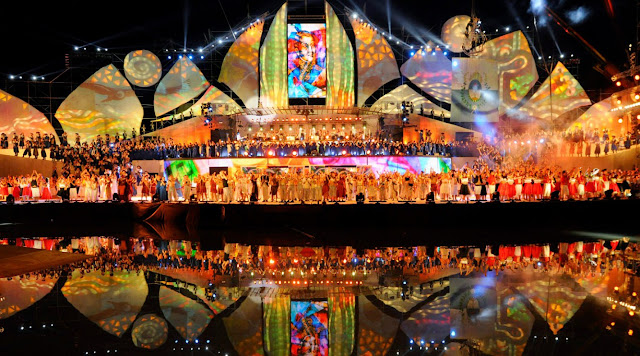Chardonnay
Chardonnay Wine
Chardonnay is the world's most famous white-wine grape and also one of the most widely planted. Although the most highly regarded expressions of the variety are those from Burgundy and California, many high-quality examples are made in Italy, Australia, New Zealand and parts of South America.
Chardonnay was born in the Burgundy region of France, where it is known as White Burgundy, and it was there that the wine gained great acclaim for its elegance.
Soon after Chardonnay’s rise in popularity, winemakers in Champagne began to grow the grape as well, using it as the dominant ingredient for their sparkling wines.
While grown in the same country, the Chardonnay grapes took on a very different characteristic in Champagne than they had in Burgundy. Winemakers began to realize that the grape had a unique knack for truly embodying terroir, the region and area where the wine is grown. No two places that grow Chardonnay produce the exact same wine, yet every region finds it is relatively easy to grow. This discovery is what helped the grape quickly spread across the world.
Describing the flavors of Chardonnay is not easy. While many Chardonnay wines have high aromatic complexity, this is usually due to winemaking techniques (particularly the use of oak) rather than the variety's intrinsic qualities. Malolactic fermentation gives distinctive buttery aromas. Fermentation and/or maturation in oak barrels contributes notes of vanilla, smoke and hints of sweet spices such as clove and cinnamon. Extended lees contact while in barrel imparts biscuity, doughy flavors. Because of this high level of winemaker involvement, Chardonnay has become known as the "winemaker's wine".
The variety itself (although often said to be relatively flavor-neutral) is responsible for most of the fruity flavors found in Chardonnay wines. These range from the tropical (banana, melon, pineapple and guava) to stonefruits (peach, nectarine and apricot), citrus and apples.
Climate plays a major role in dictating which fruit flavors a Chardonnay will have. Broadly speaking, warm regions such as California, Chile and much of Australia tend to give more tropical styles. Temperate zones such as southern Burgundy or northern New Zealand create wines marked out by stonefruit notes. The very coolest Chardonnay vineyards (those in Chablis, Champagne and Germany) lean towards green-apple aromas.
Mineral descriptors such as chalk, wet stones and crushed seashells also find their way into Chardonnay tasting notes. These are sometimes attributed to the soils in the vineyard, although the relationship between soil and wine flavor has become widely exaggerated. The most famously minerally Chardonnay wines are those of Chablis, one of the very few wine regions to focus on a largely unoaked style of Chardonnay.
Although most famous for its still, dry wines, Chardonnay is used to produce an impressively diverse range of wine styles. The variety is put to use in sparkling wines all over the world (most famously Champagne), when it is usually paired with Pinot Noir. It can also be found in sweet botrytized and late-harvest wines; Canada even produces sweet Chardonnay ice wines.
Chardonnay is particularly popular with wine producers, not least because it has a reliable market of keen consumers. The variety produces relatively high yields, will grow in a broad spectrum of climates and can be made into wine of acceptable quality with relative ease. In poor vintages, deficiencies can be covered up with oak flavors, reducing the financial impact of a bad harvest.
In the vineyard, Chardonnay presents a few viticultural challenges, but none that can't be solved with age-old techniques or a little help from technology. (Were this not the case, the variety would certainly not be as successful as it is.) In very warm climates, Chardonnay grapes tend to lose their natural acidity, resulting in flat, overblown wines. This can be partially corrected with a simple addition of acid, or by harvesting early and compensating for lack of flavor by using oak and malolactic fermentation. Vignerons in cooler climates have a quite different problem with the variety, as the vines bud and flower early in the season, making them susceptible to spring frosts. Vignerons in Burgundy (particularly in Chablis) have traditionally mitigated this with braziers between the vine rows. These are not just for warmth – they also create frost-preventing air currents.
Synonyms include: Morillon, Pinot Chardonnay, Feiner Weisser Burgunder.

Oaked Chardonnay
Higher-end wines from California, Burgundy, and Australia (among others)
Bolder Chardonnay wines call for crab cakes, linguini vongole (clams), halibut, or even pork tenderloin with apples. For vegetarians, lean towards rich or starchy vegetables like corn, pumpkin, or squash. Also, mushrooms are a must!
Unoaked Chardonnay
Chablis and entry-level wines from Chile, New Zealand, and other parts of France.
The lean, no oak style of Chardonnay are great with raw seafood like oysters, sushi, sautéed fish, pâté, Chicken Piccata, vegetable risotto, or moules frites! The crispness, minerality, and delicate flavors crave crisp, delicate foods.
SOURCE:
https://vinepair.com/wine-101/chardonnay-white-wine-guide/
https://winefolly.com/review/chardonnay-wine-guide/
https://en.wikipedia.org/wiki/Chardonnay
https://www.wine-searcher.com/grape-98-chardonnay






Comentarios
Publicar un comentario